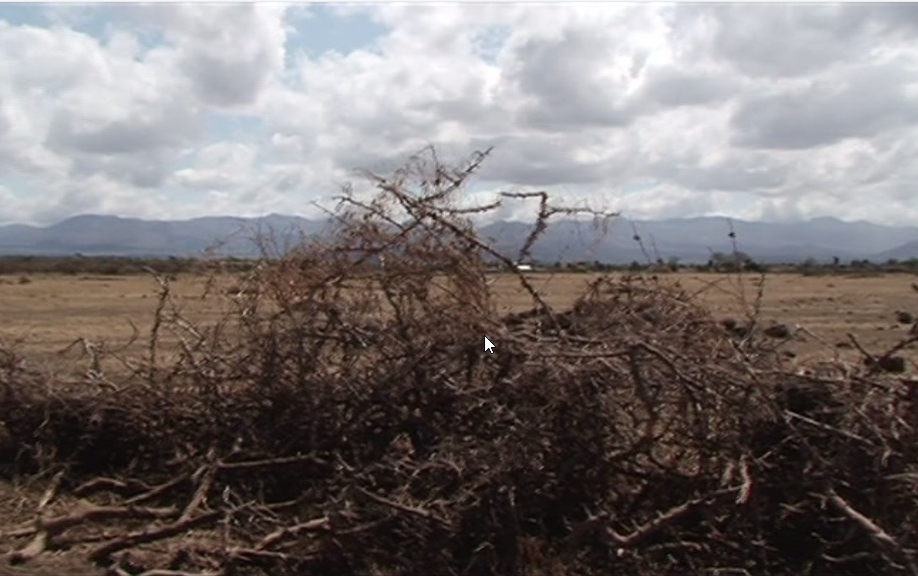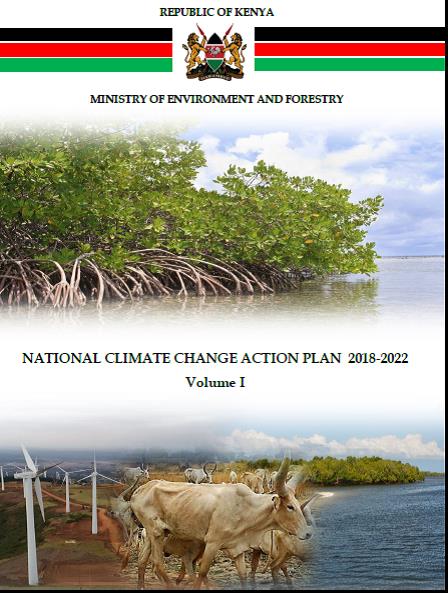Other
Other
Climate Change
United Nations Framework Convention on Climate Change (UNFCCC)
Climate Change from United Nations

Climate change in Kenya means higher temperatures, more variable rainfall, and more extreme weather. These changes amplify biodiversity loss by stressing species and altering habitats. In Kenya’s mountains, glaciers and snowfields are rapidly melting: scientists predict Mount Kenya’s remaining ice could vanish by ~2030africaclimateinsights.org. This loss of glacial water threatens highland ecosystems and downstream rivers that rainforests and wetlands depend on. Elsewhere, warming and altered rains have led to severe droughts. The 2021–2023 drought was Kenya’s worst in 40 yearsunesco.org, causing famine in pastoral regions and mass wildlife mortality. In northern Kenya, elders report finding giraffe, Grevy’s zebra and antelope carcasses strewn in the bush after animals starved in the droughtafricageographic.com. Marine life feels the heat too: Kenya’s corals have bleached repeatedly. A 2024 study of Western Indian Ocean reefs found that ~96% of sites had experienced coral bleachingtechnoserve.org. Bleaching events (in 2016, 2019 and other years) kill the symbiotic algae corals need and lead to reef fish declines. Coastal fisheries and tourism depend on these reefs, so their loss cascades through the economy.
- Rising Temperatures: Average temperatures in Kenya have increased by ~1°C over the past 50 years. This warming stresses heat-sensitive species. For example, montane forest birds and amphibians on Mount Kenya or Aberdares may lose habitat as cooler zones shrink. Heat also increases evaporation and dries soils. Studies project more frequent heatwaves and the potential for up to 1–2°C further warming by 2050, which will shift vegetation zones.
- Drought and Water Scarcity: Kenya’s northern and eastern counties now routinely face drought. As water sources dry, freshwater wetlands (like lakes Baringo, Bogoria, Nakuru) shrink and salinity rises, affecting flamingos and other waterbirds. During 2022, Lake Baringo’s fish catches collapsed as water levels dropped. In semi-arid reserves (e.g. Meru, Samburu), wildlife competitions with livestock intensify under drought. River flows become unpredictable; for instance, the Tana River’s floodplains no longer flood as regularly, impacting marshes and flood-dependent species.
- Flooding and Storms: On the flip side, some regions see heavier rains and floods. Coastal towns like Mombasa and Malindi suffered flood damage in strong El Niño years (2015/16, 2019). Floodwaters can erode mangroves and seedbeds, damaging fish nurseries. Sudden floods of rivers also kill terrestrial wildlife and wash away nests and seedlings in riparian forests.
- Extreme Events: The climate is also linked to biological threats. Kenya’s 2020 locust plague – one of the worst in decades – was fueled by unusual storms in the Arabian Peninsula. These swarms devastated crops and rangelands, indirectly affecting wildlife and human communities. Warmer, wetter winters have allowed pests and diseases to move to higher altitudes, affecting African Forest Elephants and highland crops.
In summary, climate change is a “threat multiplier” in Kenya. It worsens existing pressures on habitats and species. Conservation reports note that climate-driven drought and rainfall variability are now among the top threats to Kenyan biodiversityenglish.news.cntechnoserve.org. Key ecosystems like coral reefs and highland forests are already showing clear signs of stress. Unless greenhouse gas emissions and local adaptation measures are addressed, Kenya’s wildlife – from mountain frogs to savannah elephants – will face ever-harsher conditions.
News
Climate Change resources
What Is Climate Change?
Climate change refers to long-term shifts in temperatures and weather patterns. Such shifts can be natural, due to changes in the sun’s activity or large volcanic eruptions. But since the 1800s, human activities have been the main driver of climate change, primarily due to the burning of fossil fuels like coal, oil and gas.
Burning fossil fuels generates greenhouse gas emissions that act like a blanket wrapped around the Earth, trapping the sun’s heat and raising temperatures.
The main greenhouse gases that are causing climate change include carbon dioxide and methane. These come from using gasoline for driving a car or coal for heating a building, for example. Clearing land and cutting down forests can also release carbon dioxide. Agriculture, oil and gas operations are major sources of methane emissions. Energy, industry, transport, buildings, agriculture and land use are among the main sectors causing greenhouse gases.

Humans are responsible for global warming
Climate scientists have showed that humans are responsible for virtually all global heating over the last 200 years. Human activities like the ones mentioned above are causing greenhouse gases that are warming the world faster than at any time in at least the last two thousand years.
The average temperature of the Earth’s surface is now about 1.1°C warmer than it was in the late 1800s (before the industrial revolution) and warmer than at any time in the last 100,000 years. The last decade (2011-2020) was the warmest on record, and each of the last four decades has been warmer than any previous decade since 1850.
Many people think climate change mainly means warmer temperatures. But temperature rise is only the beginning of the story. Because the Earth is a system, where everything is connected, changes in one area can influence changes in all others.
The consequences of climate change now include, among others, intense droughts, water scarcity, severe fires, rising sea levels, flooding, melting polar ice, catastrophic storms and declining biodiversity.
People are experiencing climate change in diverse ways
Climate change can affect our health, ability to grow food, housing, safety and work. Some of us are already more vulnerable to climate impacts, such as people living in small island nations and other developing countries. Conditions like sea-level rise and saltwater intrusion have advanced to the point where whole communities have had to relocate, and protracted droughts are putting people at risk of famine. In the future, the number of “climate refugees” is expected to rise.
Every increase in global warming matters
In a series of UN reports, thousands of scientists and government reviewers agreed that limiting global temperature rise to no more than 1.5°C would help us avoid the worst climate impacts and maintain a livable climate. Yet policies currently in place point to a 2.8°C temperature rise by the end of the century.
The emissions that cause climate change come from every part of the world and affect everyone, but some countries produce much more than others.The seven biggest emitters alone (China, the United States of America, India, the European Union, Indonesia, the Russian Federation, and Brazil) accounted for about half of all global greenhouse gas emissions in 2020.
Everyone must take climate action, but people and countries creating more of the problem have a greater responsibility to act first.
We face a huge challenge but already know many solutions
Many climate change solutions can deliver economic benefits while improving our lives and protecting the environment. We also have global frameworks and agreements to guide progress, such as the Sustainable Development Goals, the UN Framework Convention on Climate Change and the Paris Agreement. Three broad categories of action are: cutting emissions, adapting to climate impacts and financing required adjustments.
Switching energy systems from fossil fuels to renewables like solar or wind will reduce the emissions driving climate change. But we have to act now. While a growing number of countries is committing to net zero emissions by 2050, emissions must be cut in half by 2030 to keep warming below 1.5°C. Achieving this means huge declines in the use of coal, oil and gas: over two-thirds of today’s proven reserves of fossil fuels need to be kept in the ground by 2050 in order to prevent catastrophic levels of climate change.
Adapting to climate consequences protects people, homes, businesses, livelihoods, infrastructure and natural ecosystems. It covers current impacts and those likely in the future. Adaptation will be required everywhere, but must be prioritized now for the most vulnerable people with the fewest resources to cope with climate hazards. The rate of return can be high. Early warning systems for disasters, for instance, save lives and property, and can deliver benefits up to 10 times the initial cost.
We can pay the bill now, or pay dearly in the future
Climate action requires significant financial investments by governments and businesses. But climate inaction is vastly more expensive. One critical step is for industrialized countries to fulfil their commitment to provide $100 billion a year to developing countries so they can adapt and move towards greener economies.

